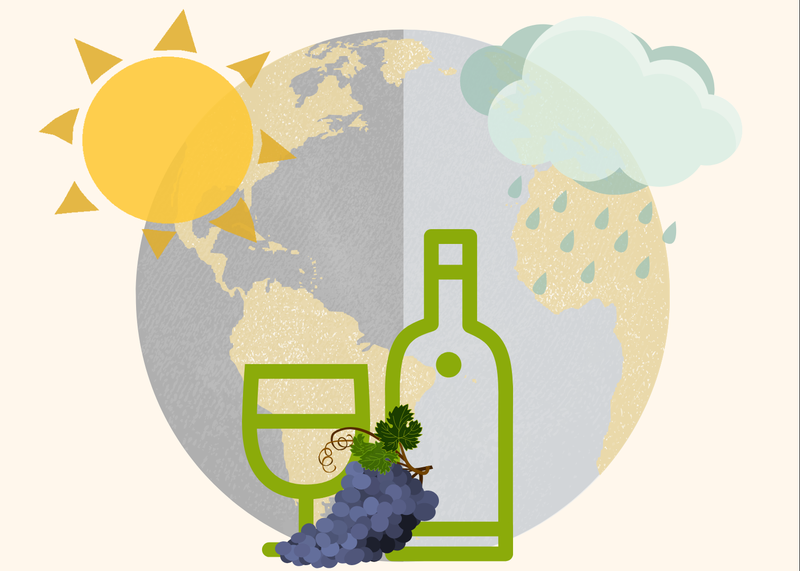Organic, biodynamic and sustainable are not exactly new terms in the wine world, but they may be new to many consumers. And with these terms showing up on more wine bottle labels, it's natural to have questions.
Does organic wine taste the same? This is an easy one to answer. Yes. One of the biggest misconceptions about these wines is they don't taste the same. The bottles may be labeled with these terms, but the wines inside are produced much like conventional wines. We think of certified organic products as costing more, fresh fruits and vegetables at the grocery store are priced higher than similar conventionally grown products. But with wine, this isn't necessarily the case. Many organic wines are priced competitively, and may even have a lower price tag depending on the region.
Explaining the terms, well, that's not so easy. The U.S. government does regulate the term "organic" but the use of "sustainable" and "biodynamic" have no legal regulations.
Organic appears in one of two ways -- either as "USDA Certified Organic Wine" or "made with organic grapes." The first means the entire production cycle from the grapes in the field to the wine in the bottle has been done following strict rules, the hallmark of which is no altered ingredients. This means no synthetic pesticides, chemical herbicides, added sulfites, genetically-modified-organisms (GMOs) and only native yeast. "Made with organic grapes" is much like the term implies no chemical pesticides, chemical herbicides and a low sulfite contact, however, these wines may be made using nonnative or genetically modified yeast.
Sustainable wines are made with the intention for having little or no negative impact on the land. Many of these wineries will use water reclamation systems, gravity-fed juice flows, solar power and recycling programs. However, these wineries are not regulated the same as certified-organic and are not required to disclose the methods they are using to add "sustainable" to the label. This is an important distinction because the winemakers may not always follow organic methods and may still be using chemical pesticides, herbicides and sulfites the same as a conventional winery. However, many wineries using sustainable practices are generally organic and even biodynamic even if they aren't certified.
A winery meeting the requirements to certified "biodynamic" generally will exceed standards of even organic farming. The farming techniques usually do not allow any fungicides, herbicides, synthetic pesticides, fertilizers, growth stimulates or GMOs and will generally include crop rotation. There are limited chemical additives such as sulfites and only native yeasts used among other practices in keeping with biodiversity.
With all of these terms the industry is working to offer the consumers clearer definitions and regulations. If ever in doubt when buying you can always go to the winery's website for more details. Most of the wineries going this extra step in growing and producing want consumers to know and most likely will be in detail on the website.
THE VALUES
2018 Candoni Organic Red Blend, Italy (about $12)
2018 Benziger Winery Chardonnay, California (about $13)
2018 Frey Organic Red Zinfandel, California (about $11)
2018 Stellar Organics Merlot, California (about $10)
THE SPLURGES
2018 Bonterra Cabernet Sauvignon, California (about $15)
2018 Cline Ancient Vines Zinfandel, California (about $16)
2018 Montinore Estate Pinot Noir, Oregon (about $18)
2018 Frey Organic Cabernet Sauvignon, California (about $22)
Lorri Hambuchen is a member of London's Institute of Wines and Spirits. Email:
uncorked@thewinecenter.com
Food on 05/27/2020
